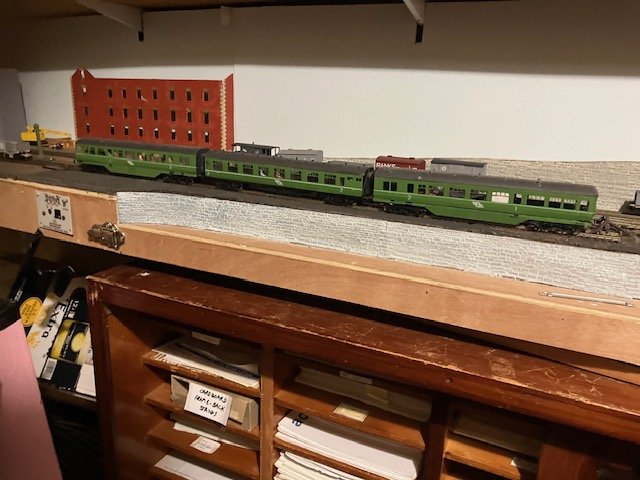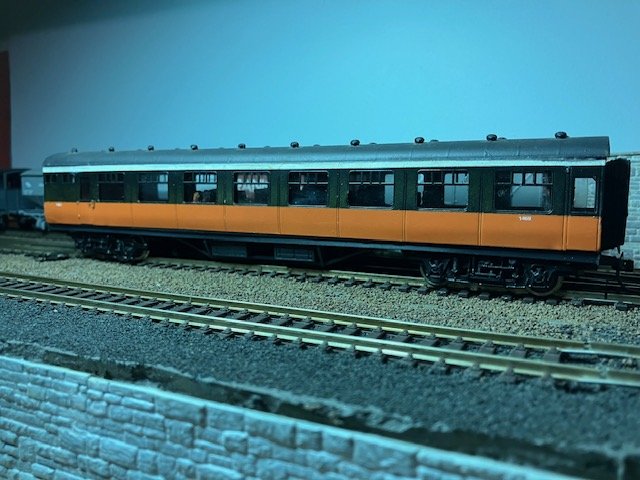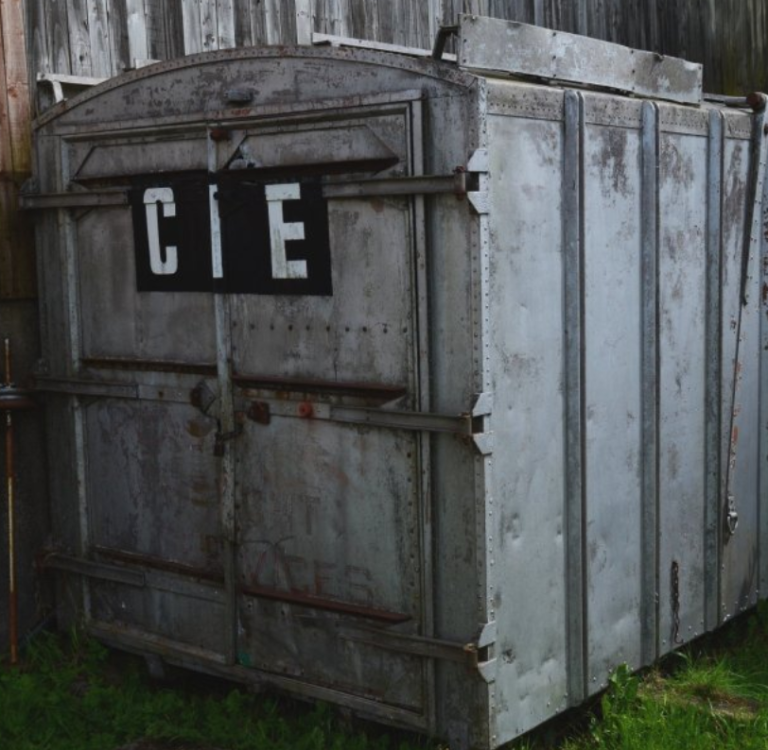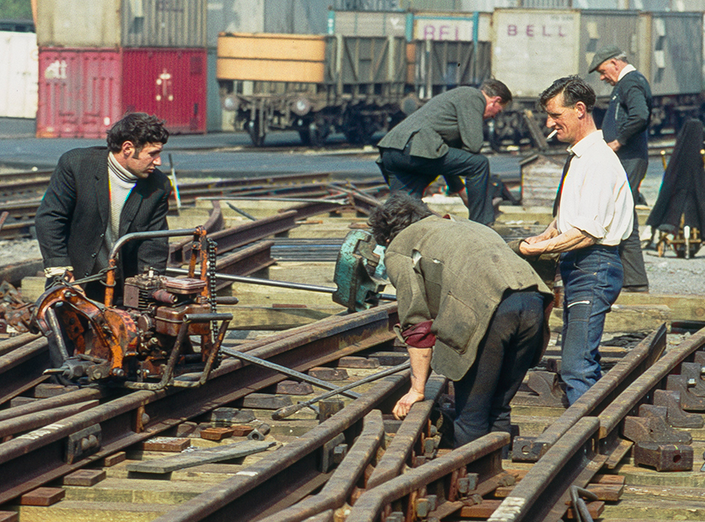-
Posts
2,028 -
Joined
-
Last visited
-
Days Won
4
Content Type
Profiles
Forums
Resource Library
Events
Gallery
Blogs
Store
Community Map
Posts posted by Weshty
-
-
On 12/3/2025 at 3:51 PM, Mol_PMB said:
Incidentally, on the topic of SSM, the front page of their website isn't working for me:
http://www.studio-scale-models.com
For the sub-pages like the coaches the web pages do work...
http://www.studio-scale-models.com/Coaches.shtml
... but the only Bredin coach listed is the mail van (which looks nice, but was unique).
Was there a wider range available in the past?
Hi all,
I have got the website issues sorted, just some small adjustments to be made. Thanks for the help all.
Yes, I have a range of Bredins (3rd and composite) and and can look at relaunching them, but may have to do a minimum purchase pack to make it work. Let me know if that is of interest.
Regards
Des
-
 3
3
-
 3
3
-
-
46 minutes ago, Mol_PMB said:
Not far off - for comparison this is a former GSR carriage which was preserved by the RPSI in GSR livery:
https://www.flickr.com/photos/irishrailwayarchive/53511260053
I have the transfers / decals for the GSR ...so if interested!
-
 2
2
-
-
On 1/2/2025 at 10:47 AM, Mayner said:
"Back in the Day" Comet Models has a particularly striking exhibition stand that featured contemporary rtr British Outline steam outline locos whizzing away continuously on their replacement chassis and their beautifully finished coach kits with flush glazing at a time the majority of plastic rtr coaches had their glazing set behind relatively thick plastic sides.
The TMD/SSM etched GNR, GSR and GSWR etched coach kits were a similar break through for Irish modellers, in the early 2000s Worsley Works began producing etched sides, ends and underframes for 'modern" Irish coaches including the AEC Railcars, Laminate, Park Royal and Cravens on a similar principal to the Comet Kits, but without a suitable roof extrusion or detail castings.
The Railcars and Coaches build into nice models, but there models of a particular era and there are challenges particularly around the roof and sourcing suitable running gear/bogies. When I sourced the parts about 20 years ago my initial thoughts were to use an extruded roof similar to those used by Comet and other British manufacturers, but the $11k NZ -€6k price tag for a die to extrude a wider Irish profile coach roof put that particular idea to bed, instead I formed the AEC Railcar roof using balsa, glider tissue and dope, with lining tape jointing strips and cast whitemetal vents, I used standard Comet BRMk1 roof extrusions cut longitudinally widened to the Irish profile with the resulting gap filled with body filler supported on a plasticard jointing strip, followed by a lot of sanding before completing the roof detailing. Functional coach bogies were MJT "Torsion Bar" bogies widened to 21mm gauge, while the railcar runs on "Black Beetle' bogies supplied to 21mm gauge rtr. The main stuff up is the coaches run on BR pattern Commonwealth Bogies as no suitable castings were available and the MTK AEC railcar bogie sideframes are to a 9'6"" as opposed to the correct 10' wb resulting in a misalignment between the functional and cosmetic bogie sideframes.
Ten or so years later when I began to design the Tin Van kits my initial thoughts were to use a 3D printed body core with etched cosmetic overlays, but ended up producing the vans as conventional etched kits as a result of the limitations of the 3D printing process and cost.
While the large scale release of relatively inexpensive high quality rtr models has lead to a expectation that manufacturers like MM or IRM will produce rtr models of once common items of stock such as the AEC Railcars, Laminates, Tin Vans and the various Passenger Brake Vans, I still believe that there is a place for kit and scratch building as it may not be viable to produce some or all of these models as a result of the size of the market. This has been reinforced to a degree of the lower than expected demand for the forthcoming Intercity Railcars, recent sale of Bulleid Wagons and IRMs recent instruction to the factories to reduce minimum order quantities for some models.
So what of the Worsley Works Irish coaching stock and what could be done to simplify its assembly, a number of New Zealand kit manufacturers have shifted to a multi-media approach combining laser cut, etched and 3D printing.
1. The issue of the wider Irish profile could be overcome by 3D printing the part possibly including basic detail such as jointing strips, including a domed end for AEC railcars.
2. A one piece 3D printed floor/ends & underframe including truss bracing and battery boxes as opposed to individual components.
3. A one piece 3D printed interior including partitions and seating.
4. 3D printed functional bogie suitable for 21mm or OO.
Using etched coach sides as opposed to a fully 3D printed body eliminates the risk of print defects inherent in resin printing in particular both sides of a coach body with a near identical surface finish on both sides as opposed to 1 good and 1 bad (soft) side sometimes present with 3D printing.
Just floating the idea around rather than actually planning to do anything at this stage.
Nice one John.
I did some outline etch designs for the Laminate underframe some time ago, as well as a master for the CIE version of the Commonwealth bogie sides.
My main issue was to capture the roof and side strapping detail while keeping the build and solder work required relatively easy. (ya know, cut, bend, bolt or solder with minimal parts). Like yourself, floating rather than progressing it (just too busy on other projects currently). But who knows!
-
 1
1
-
 1
1
-
-
-
1 hour ago, Horsetan said:
Could there possibly be a kit or two on this theme from SSM in future?
Definitely a new transfer set or two. Just need the interest!
-
-
There's the makings of a good reference book in all those fine photos, great work done in collating it.
-
 1
1
-
 1
1
-
-
I still remember the sense of wonderment when Paddy's 141s first became available. They really were next level compared to anything else that was on the market at the time.
-
 5
5
-
 1
1
-
-
Lovely looking loco and very well prepared photos. Atmospheric....no pun intended.
-
 1
1
-
 1
1
-
-
Oh my sweet giddy aunt. That really looks fantastic. Well done sir, well done! I was marvelling at your interior work, and had forgotten that when I designed the kit that it included all this detail.
@Mol_PMB Yes, the kit is designed to be able to take a 35mm wheelbase Black Beetle. I bought one for test fitting just to make sure.
Some googling shows that you could use a Tenshodo equivalent motor bogie.
http://motorbogies.com/index.php?main_page=product_info&products_id=304
-
 4
4
-
-
Typically a friction fit. And superglue the inner edges for extra security.
-
 1
1
-
-
That's a very cool implementation of 3d printing. Coming up on 17 years since I bought the SSM range from Paul. A complete gentleman.
-
 3
3
-
 2
2
-
 1
1
-
-
As an update folks, I have plenty of the 101 Sulzers in stock, as well as the requisite brass detailing.
I also have brass staff catchers that I can provide free of charge with the kits if wanted. I've also reduced the price to €70,
-
 2
2
-
 1
1
-
-
-
Lovely job done. The antenna is in the centre of the roof. I'll confirm when I get access to my archive this evening.
-
 1
1
-
 1
1
-
-
That's a class looking model. Will definitely be on the shopping list. Well done Paddy.
-
 3
3
-
 2
2
-
-
On 30/10/2024 at 10:31 AM, Horsetan said:
Des:
Out of interest, would it be possible to reduce the existing 7mm scale artwork down to 4mm scale?
I don't have the artwork readily available, so would be working with the etches. The bigger task is resizing all the brass and whitemetal castings. Unfortunately It's too big a task to take on currently
-
 1
1
-
 2
2
-
-
I took over the Northstar range of Irish kits, which includes the 7mm PP. For those that might be interested.
-
 2
2
-
-
20 hours ago, jhb171achill said:
Des - are you still doing those old-fashioned style road direction signposts?
I sure am. Loads of new brass poles in stock as well.
-
 3
3
-
-
Hi all,
Great to see the interest. I think it may be a security cert issue. I'll be updating my webprovider in the new year and this should eliminate the issue.
@Westcorkrailway, just drop me an email to dezsullivan@gmail.com and I'll sort you out.
With my inventory restocked, I've dropped the price on the Sulzer 101 resin kit. Also have a load of 041/081/071 wipers back in stock for those interested.
-
 5
5
-
 1
1
-
-
On 18/8/2024 at 3:28 AM, Mayner said:
The Studio Scale Models version of the E Class (J26) is probabably the best option for modelling a loco in MGWR-GSR condition and the Alphagraphix version for modelling the J26 in late GSR-CIE condition.
The SSM kit is supplied with parts (etched and cast) to assemble the locos in original condition before they were re-built with new boilers after 1911, but curiously includes etched parts to assemble the locos as running on the Waterford & Tramore with enclosed extended bunkers and recessed footsteps. The locos rebuilt after 1911 retained their original chimney and dome, but the smokebox replaced with a less ornate dished version and safety valve covers removed.
The Alphagraphix model appears to be the late (post 1940) GSR version with riveted smokebox, 'built up" Inchacore chimney and plain smokebox door.
The TMD/SSM kit chassis can be assembled to OO or 21mm gauge in rigid or compensated form. The kits were orignally supplied with a brass chassis etched from the same thickness of material as the body, later kits with an additional nickle silver chassis with beam compensation. I have TMD/SSM MGWR E/J26 kits with both the original brass and later replacement nickle silver chassis both run fine!
Hi All,
just to note that I have received my latest batch of etches which include stock of the J26.-
 2
2
-
 1
1
-
 1
1
-
-
The old airfix Mk2 or hornby should do the job Sean. I have the sides in stock.
-
 1
1
-
 1
1
-
-
Hi all, I'll still active with the models, send any queries to dezsullivan@gmail.com. The info@ssm no longer works.
All the best, Des
-
 14
14
-
 1
1
-
 2
2
-
-
Gents, rest assured I have plenty of Sulzer 101 kits in stock.

-
 3
3
-
 2
2
-
.png.c363cdf5c3fb7955cd92a55eb6dbbae0.png)







Anyone heard from Studio Scale Models?
in General Chat
Posted
Joseph, can you email me directly and I will sort you out. I've been involved in a project that has had me working 16 hour days for the last couple of weeks.